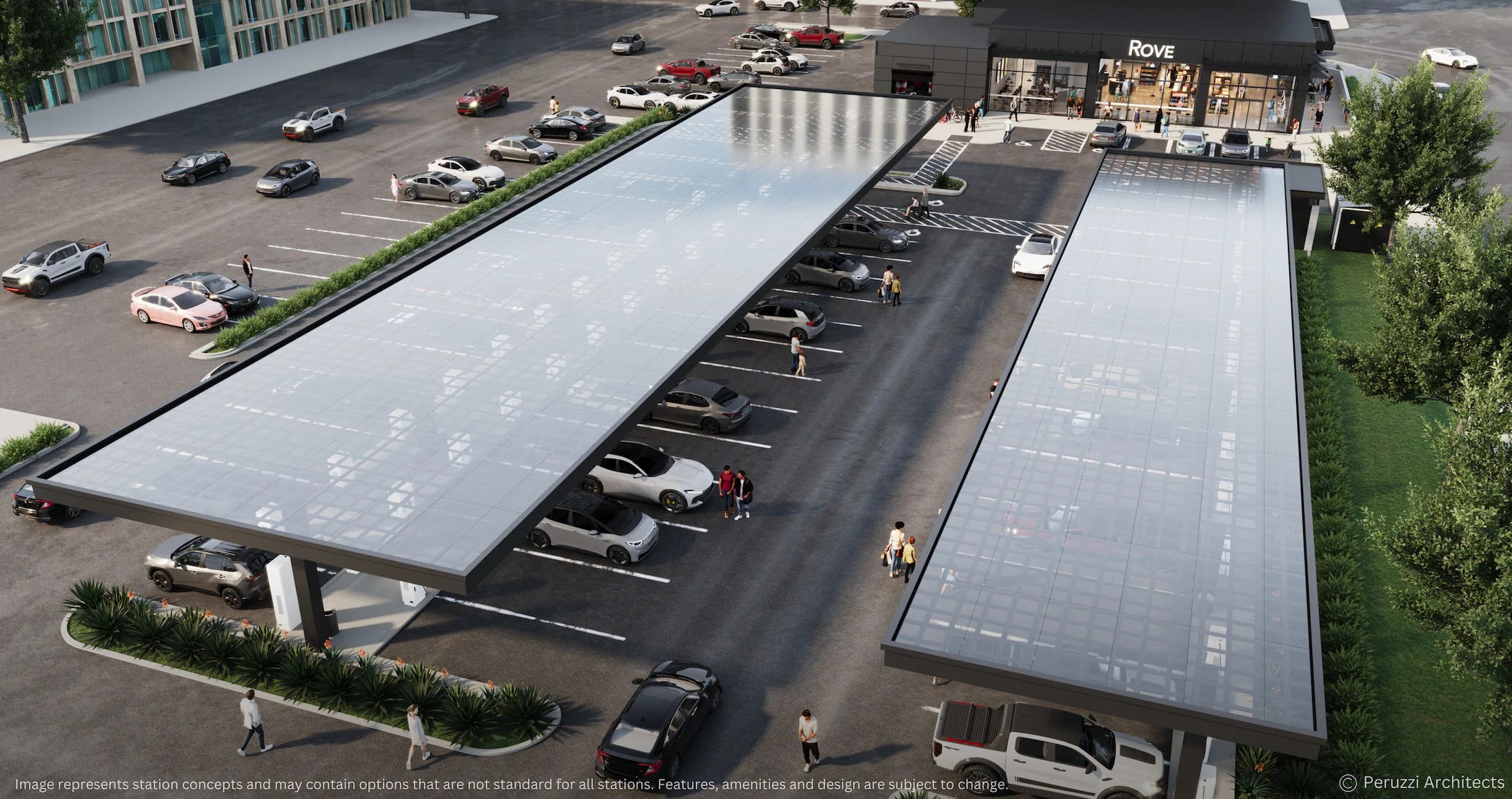Getty Images
- Stopping to charge an electric car isn’t like pumping gas.
- EV charging stations sometimes lack simple amenities like 24-hour bathrooms, food, and trash cans.
- Charging networks need to improve the experience if they want more people to buy EVs.
During a recent trip in an electric car, I stopped to top up at a charging station. Recharging went smoothly — and that’s not always the case in these early, glitchy days. Then I realized I needed to use the restroom.
But there was a problem. The shopping plaza nearby was closed for the night. At 10 p.m., a totally reasonable road-tripping hour in my view, there was nowhere within walking distance to stop in and use a bathroom — much less grab a bag of chips and a coffee. As far as I could tell, the place was a ghost town.
So I hopped over a guardrail, waded into some bushes, and, well, you know the rest. Snacks would have to wait.
electric car isn’t like pumping gas.
Tim Levin/Insider
I suspect I’m not the only EV driver who has risked a public indecency charge during what would have otherwise been a routine pit stop in a conventional car. That’s because charging stations today often lack basic amenities that we take for granted at gas stations: things like bathrooms, rain and sun cover, food options, and even trash cans.
If electric cars really are going to be the future, experts told Insider, the experience at charging stations needs to get a whole lot more convenient.
EV owners are fed up with the charging experience
According to JD Power, a research firm that keeps close tabs on consumer sentiment around EVs, drivers are consistently unhappy with the availability of things to do while charging their cars. Getting a solid charge typically requires about 30 minutes, much longer than the wait to pump a full tank of gas.
“I can’t tell you how many responses we get from EV owners who are saying, ‘It’d be really nice to have an awning for when it’s raining,'” Brent Gruber, executive director of the firm’s EV practice, told Insider. “Or a place to sit down and relax, or even simple things like garbage cans to be able to clean out my car while I’m charging.”
Owners also complain about charging stalls being too far from places to grab food or shop, Gruber said. Moreover, plugs are often relegated to some dimly lit back corner of a parking lot, meaning they can be unsettling to access at night.

Tim Levin/Insider
Charging networks have historically installed their plugs at shopping malls, supermarkets, banks, hotels, or anywhere else with some extra parking space and land owners willing to make a deal. They don’t often have convenience stores attached like gas stations do, so they depend on other businesses to provide their patrons with basic services.
That means some plugs are steps from everything you need, while others are just a high-voltage connection in a random parking lot. Electrify America and EVgo, two of the country’s largest charging chains, told Insider that they strive to choose locations with amenities that make refueling more pleasant.
Much of the current charging infrastructure was built years ago, when EVs weren’t nearly as popular and carefully choosing locations wasn’t as much of a priority as getting stalls in the ground, often with the goal of receiving government grants, experts said.
EV charging stations could soon offer lounges, restaurants, and even a drive-in movie theater
EV buyers should expect better access to Doritos and bathrooms as more convenience store chains, gas stations, and travel centers get into the charging game, said Loren McDonald, founder and CEO of EVAdoption, an EV-industry consulting firm.
“In the future, a much higher percentage [of chargers] are going to be at companies that are already in what you would call the fuel, service, and food business,” he said. “That’s a really encouraging positive trend that is going to start to fix some of this.”
Brendan Jones, CEO of Blink Charging, which operates its own stations and sells charging equipment, told Insider his firm is stepping up its amenities to satisfy the emerging crop of electric-car buyers and help drive EV adoption. In the past, EV drivers were almost exclusively early adopters who were thrilled to find anywhere to plug in. Today’s buyers have higher standards.

Rove
Blink has new requirements for potential locations, Jones said, including bathroom and food options that are open 24 hours and only a quick walk away. Plus, it’s considering relocating 30-40 of its older stations that aren’t up to snuff.
“We will not, at Blink, sign up with anybody anymore that doesn’t have those basic amenities,” he said.
Some companies are reinventing the charging station to provide even more ways to pass the time than a typical gas station. It’s a natural evolution, since EV road trips require so much waiting around.
Electrify America is planning flagship locations with lounges, dining options, and stores. Tesla has plans for a 1950’s style diner and drive-in movie theater at one of its Superchargers. Rove, a startup, is working on huge charging stations with grocery stores, fresh espresso, and 24/7 lounges.
That’s all great news for both your boredom — and your bladder.
Are you an EV owner with a story to share? Contact me at [email protected]
